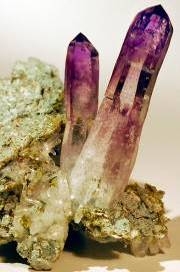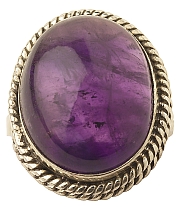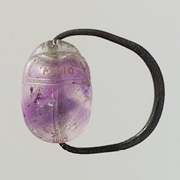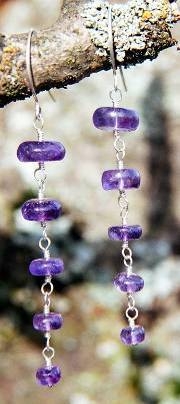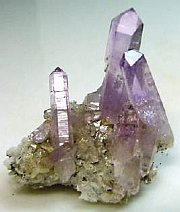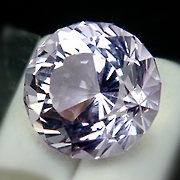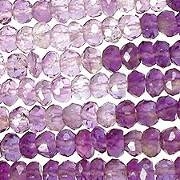Let her an amethyst but cherish well, Description Amethyst is the translucent lavender to royal purple variety of quartz. Today amethyst is mainly mined in Brazil, Uruguay and Madagascar. On the Canadian side of Lake Superior, there is a place named Amethyst Harbor where the gemstone is found, though rarely of gemstone quality. Caring for Amethyst In the presence of sunlight or high heat, amethyst may lose its color, so this gemstone should not be worn in a hot tub or while sunbathing. History In the 18th century, Russian Empress Catherine the Great sent thousands of miners into the Urals to look for amethyst. Russian amethysts, mainly mined in the Ural Mountains, were famous for their particularly beautiful color. Folklore Bacchus and the Origin of Amethyst The following myth of the Greek god Bacchus, the god of wine and debauchery, explains the origin of amethyst. After a long evening of overindulgence, Bacchus, the god of wine, became offended by some thoughtless mortal comment. With his head clouded by wine, Bacchus decided to avenge himself by having his tigers devour the first mortal he met. As the Fates would have it, the pure, beautiful, mortal maiden Amethyst was on her way to worship at the shrine of Diana, goddess of the woodlands. As the tigers sprang toward Amethyst, she called out for protection. Diana heard her cry and saved Amethyst by turning her into a pure white stone. Recognizing his mistake, Bacchus soberly repented of his cruelty by pouring his divine wine over beautiful Amethyst's stone body, permanently transforming the stone into a vivid violet color. A Charm Against Drunkenness Amethyst is said to prevent drunkenness and death from poison and other forms of evil. Deriving its name from the Greek word for "not drunk," amethyst may be worn as a charm against drunkenness and other forms of overindulgence. Amethyst Drinking Cups Ancient Greeks liked to drink from amethyst cups. The purple color of the amethyst cup appeared to turn water into wine, which could be drunk without drunkenness. This trick of the eye evolved into the belief that amethyst could prevent drunkenness. It was even thought that a little powdered amethyst stirred into a drink could prevent drunkenness. A Sobering Charm Amethyst was also thought to cool the passions of those overly excited by love. These sobering effects were thought to improve a person's shrewdness and therefore bring success in many areas of life, love and war. Protection against Snake Bites Amethyst is also said to protect against insect and snake bites. Pliny, author of the first Encyclopedia of Natural History, wrote that amethyst, if worn round the neck on a cord made of dog hair, protects against snakebite. Hieronymus, an early father of the Catholic Church, reported that eagles placed an amethyst in their nests to protect their young from snakebite. Medieval German Abbess Hildegard von Bingen wrote that amethyst repelled insect bites while beautifying the skin. Headache Relief Other Medieval scholars have asserted that, when applied to the forehead, amethyst may relieve headaches. Hebrew Symbol of the Spirit of God Moses described amethyst as a symbol of the Spirit of God. The Jewish High Priest wore amethyst in his official robes. Medieval Symbol of Prophecy In the Middle Ages, it was believed that, when worn on the left wrist, amethyst inspired visions and premonitions. Thus amethyst was thought of as a symbol of truth and prophetic clarity and became a favorite stone of the Catholic Church. Amethyst came to occupy a prominent position in the ornaments of the Catholic clergy. Tibetan Symbol of Clarity In Tibet, amethyst rosaries are dedicated to Buddha and said to promote clarity of mind. Dreaming of Amethyst In Victorian times, it was thought that dreaming of amethyst indicated freedom from harm and therefore success for travelers, sailors and clergy. Symbolism Hour: 8:00 am Day: Wednesday Birthstone, modern: February The February born shall find Season: Spring Wedding anniversary, traditional: 6th Angel: Raphael and Barchiel Apostle: Matthias Star: Scorpion 3º of Sagittarius Planets: Mars and Jupiter Zodiac: Pisces From passion and from care kept free US States: Canadian Province: Ontario, Canada, official state mineral Country: Uruguay See also |
|
